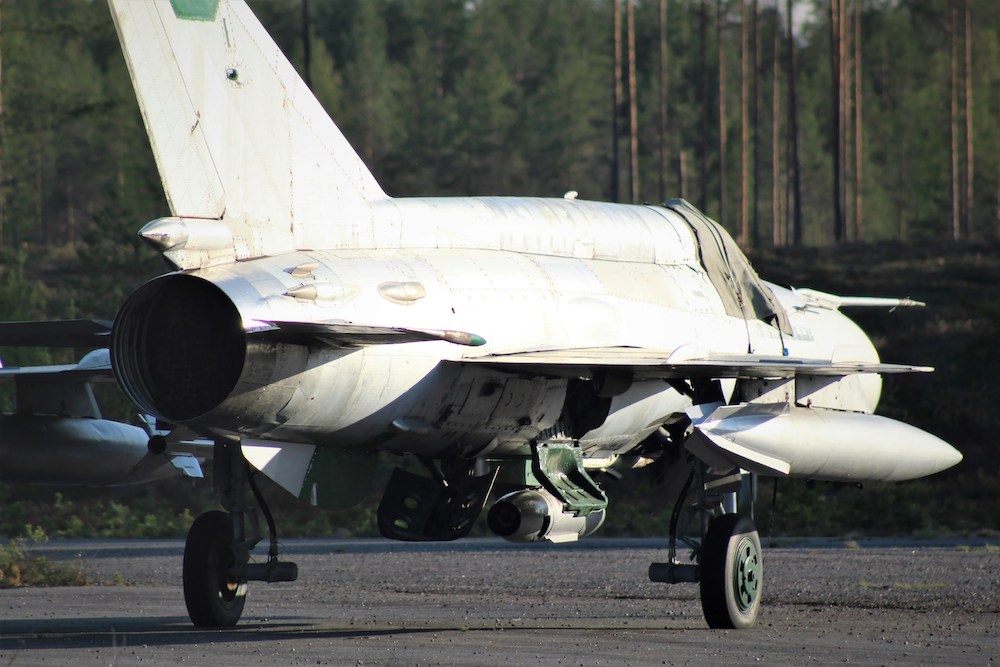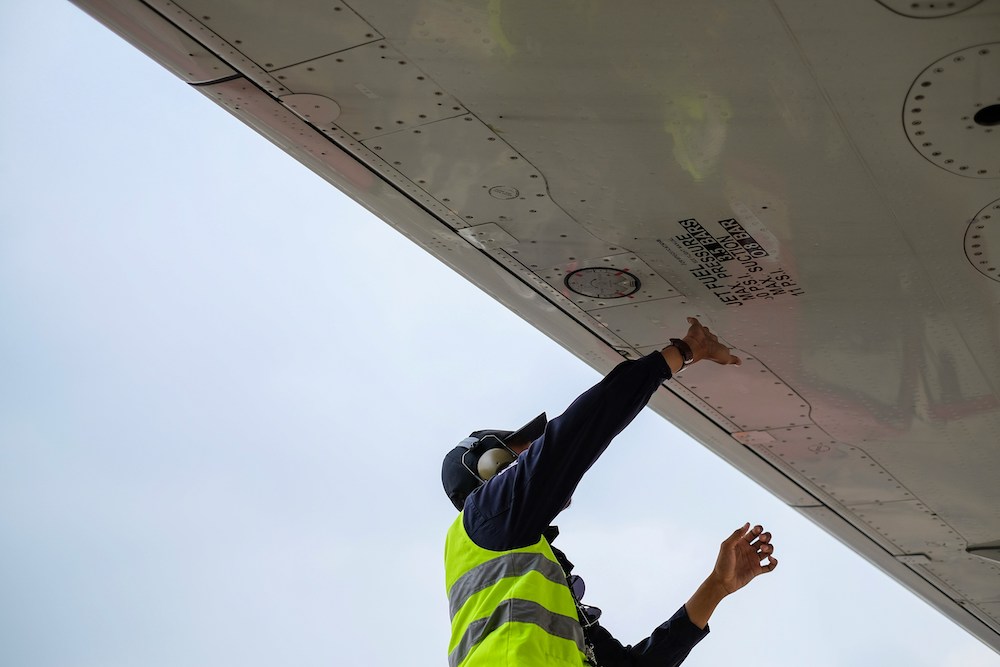
We have entered the era in which data is abundantly generated and collected. The aviation industry alone generates Terabytes of data per flight per hour from aircraft sensors, the flying public, the air traffic system, etc.
In turn, aircraft operators, airports, and maintenance providers analyze and use this data to benefit their customers and employees, generate revenue, and increase operational reliability. But before we dive into more detail on how big data is leveraged within the aviation industry, let’s first get a better understanding of what big data is.
Big Data Explained
Big data is a collection of large and complex data sets that are difficult to process using basic database management tools or traditional data processing applications. Large data sets can be made up of numerous data formats, such as structured, unstructured, and/or semi-structured.
But what makes the data big? Five specific characteristics must be met to qualify as big data and to differentiate it from the rest:
- Volume, which represents the large size of the collected data.
- Velocity, which represents the high speed at which the data is generated, collected, analyzed, and used.
- Variety, which represents the diversity of the collected data, depending on the data type (i.e., structured, unstructured, semi-structured).
- Variability, which represents the biases, noise, and abnormality of the collected data.
- Value, which represents what the data promises to achieve with clean information and effective processing.
Effectively used big data can be transformed into insights and intelligence, which can, in turn, be used to make strategic and operational decisions.
What is Big Data Analytics in Aviation?
Now, to make effective strategic and operational decisions within aviation, big data must be correctly interpreted, and this is where big data analytics comes into play. Big data analytics is the study of large amounts of stored data to extract behavioral patterns to be used for data driven decision making.
There are four (4) types of big data analytics:
- Descriptive, which explains what happened in the past based on data presented through graphics or reports, but not why or what will happen in the future.
- Diagnostic, which seeks to understand the reasons why any given event took place in the past.
- Predictive, which evaluates data to predict what could happen in the future.
- Prescriptive, which is an evolution of predictive big data analytics utilizing high technology systems and mathematics. In this type of data analytics, the system which analyzes and predicts the data, also advises on how to proceed according to the data trends.
Any combination of these big data analytics techniques can be used to drive more effective decision-making. Let’s explore how this concept can be applied to aviation industry operations and parts management.
Big Data Analytics Application in Aviation Operations
The aviation industry runs on very thin profit margins, making it an incredibly difficult business. However, with the wealth of available data and the implementation of big data analytics, aircraft operators can benefit greatly, while cutting costs and enhancing operational reliability.
The data collected within aviation operations comes through many different pipelines, including:
- Aircraft sensors (i.e., equipment reliability reporting)
- Inventory management software
- Passenger feedback (e.g., public facing website, mobile app, social media)
- Flight information (e.g., scheduling, weather, route planning)
- Airport data (e.g., check-ins, baggage claims)
- Employee input (e.g., internal communication platforms, surveys)
The goal of big data analytics is to take this data and try to understand how the layers fit together so that more data driven decisions can be made to:
- Enhance customer experience – for example, reducing friction when booking a reservation or effectively maneuvering through an airport.
- Improve employee experience – for example, keeping employees better informed or learning through surveys about what customers say is or is not working for them.
- Generate revenue – for example, making personalized offers to customers or making offers that are competitive with the rest of the industry.
- Improve operational reliability – for example, better preparing for weather and other operational interruptions.
- Proactive part procurement – for example, managing the fleet more effectively by ensuring spare parts are promptly available when they are needed.
Improving Operational Reliability Using Appropriate Maintenance Strategies
In aviation, big data analytics goes hand-in-hand with reliability-centered maintenance (RCM). RCM allows aircraft operators to use appropriate maintenance strategies (i.e., reactive, preventive, or predictive) depending on the nature of the equipment and the nature of the equipment failures. These strategies can be determined with the calculated utilization of AI (i.e., machine learning) and data science (i.e., big data analytics). The article Aircraft Predictive Maintenance and Its Role in Reliability-Centered Maintenance (RCM) discusses each of these maintenance strategies in more detail.
All in all, determining the correct aviation maintenance strategy allows aircraft operators to:
- Lower maintenance operation costs
- Extend equipment life
- Reduce downtime
- Increase production capacity
- Enhance safety
- Improve aircraft parts inventory management
Now, combined with all the other big data generated and collected within aviation operations (e.g., flight information, employee input), appropriate strategic and operational decisions can be made as to when, where, and how the maintenance can be accomplished, all while optimizing time and assets.
Although planned maintenance can be easily accommodated using an established maintenance strategy, many flight delays and cancellations still result from unplanned maintenance. This is where predictive maintenance, in particular, can offer the promise of increased reliability along with bolstered operational and supply chain efficiencies.
Predictive maintenance leverages big data and technological progress to better predict and manage aircraft maintenance efforts. It continually monitors mechanical conditions of certain aircraft parts and systems and their operating performance to provide the maximum interval between repairs, while consequently optimizing investments.
Strategic Aircraft Parts and Materials Management
Aircraft parts and materials are a sizable chunk of any aircraft operator’s expenses; therefore, it is essential to keep these costs under control and the inventory strategically stocked. However, calculating the best timeframe for needing spare parts and materials can be challenging. As a result, many aircraft operators keep extensive spare parts inventories to optimize operational efficiency, which can result in high overhead costs.
With big data analytics, however, aircraft operators can apply appropriate maintenance strategies and, in turn, predict exactly when and where spare parts and materials will be needed for the specific maintenance needing to be done. Based on the given maintenance needs, this allows aircraft operators to:
- Optimize stock levels
- Control costs
- Make accurate inventory decisions
With the appropriate application of big data analytics, aircraft operators can truly optimize the procurement of spare parts and materials.
Big Data Analytics Challenges and Implementation Considerations for Aviation
As always, with great advancements come great barriers. Therefore, if aircraft operators choose to implement big data analytics within their organizations, they must be ready to make the appropriate initial adjustments and investments. Big data analytics requires the following infrastructure elements to be considered:
- Hardware
- Software
- Expertise
- Staff training
To make big data analytics reliable, aircraft operators must ensure the data is collected and processed with the appropriate IT infrastructure and a suitable team in place to optimize the data usage. The following approach should be considered to implement the correct framework to take full advantage of big data handling:
- The data should be collected in real-time using data collection tools.
- The data should be processed using appropriate hardware, software, and cloud technologies for optimum efficiency.
- Specialists, such as software and cloud engineers, data experts, and reliability engineers should be employed to collect, process, and utilize the data correctly.
- Decision makers should be educated in the interpretation of the data to make effective data driven strategic and operational decisions.
- Ideally, data across different platforms should be integrated to augment insights and streamline reporting
With the many moving components of big data analytics for aviation applications, the initial cost of implementation can be high. However, aircraft operators can start small by applying the concept to a single data set and scaling accordingly over time. Once a data collection tool is in place, appropriate parameters should be defined and monitored. The data should then be gathered, and machine learning models built to extract meaningful insights. The predictions should then be compared against existing processes and estimated annual savings determined. If big data analytics proves to reduce costs, the concept can be scaled gradually to include additional data sets.
How Data is Revolutionizing the Decision-Making Process
The revolution of datafication is just beginning. Through the process of transforming relevant aspects of aircraft operators’ processes into quantifiable data, aviation organizations can collect, analyze, and use this data to gain insights and make informed decisions.
As technology continues to shape our world, big data analytics will help companies to better understand their customers’ and employees’ needs, find previously unnoticeable opportunities to generate revenue, and provide a better overall service through improvements in operational reliability.
Data driven decision making will allow aviation organizations to:
- Make more confident operational decisions by removing the subjective elements from the decision-making process.
- Become more proactive by identifying trends that could benefit the organization and detecting threats before they become serious issues.
- Realize cost savings by optimizing appropriate strategies to utilize only the necessary products and services.
Every aviation organization has big data in its future, and it won’t be long before we’re all in the data business.
ePlane – Procurement Software Worthy of Next-Gen Tech Stacks
When based in spreadsheets and outdated online marketplaces, aircraft part procurement is time-consuming and ineffective. ePlane is deploying data integration capabilities combined with machine learning to give forward-thinking aviation companies optimized solutions, including:
- ERP integrations with real-time updates
- Conversational analytics analysis, in which you can ask specific questions about your own data and receive tailored responses
- AI-driven forecasting into future part pricing
- Reporting dashboards that are comprehensive yet easy to understand
CLICK HERE TO LEARN ABOUT OUR ANALYTICS CAPABILITIES
By Katarzyna Szwed-Carlson
Kasia Szwed-Carlson is an expert in the aviation industry with 15 years of experience working in flight operations management and training leadership roles.



